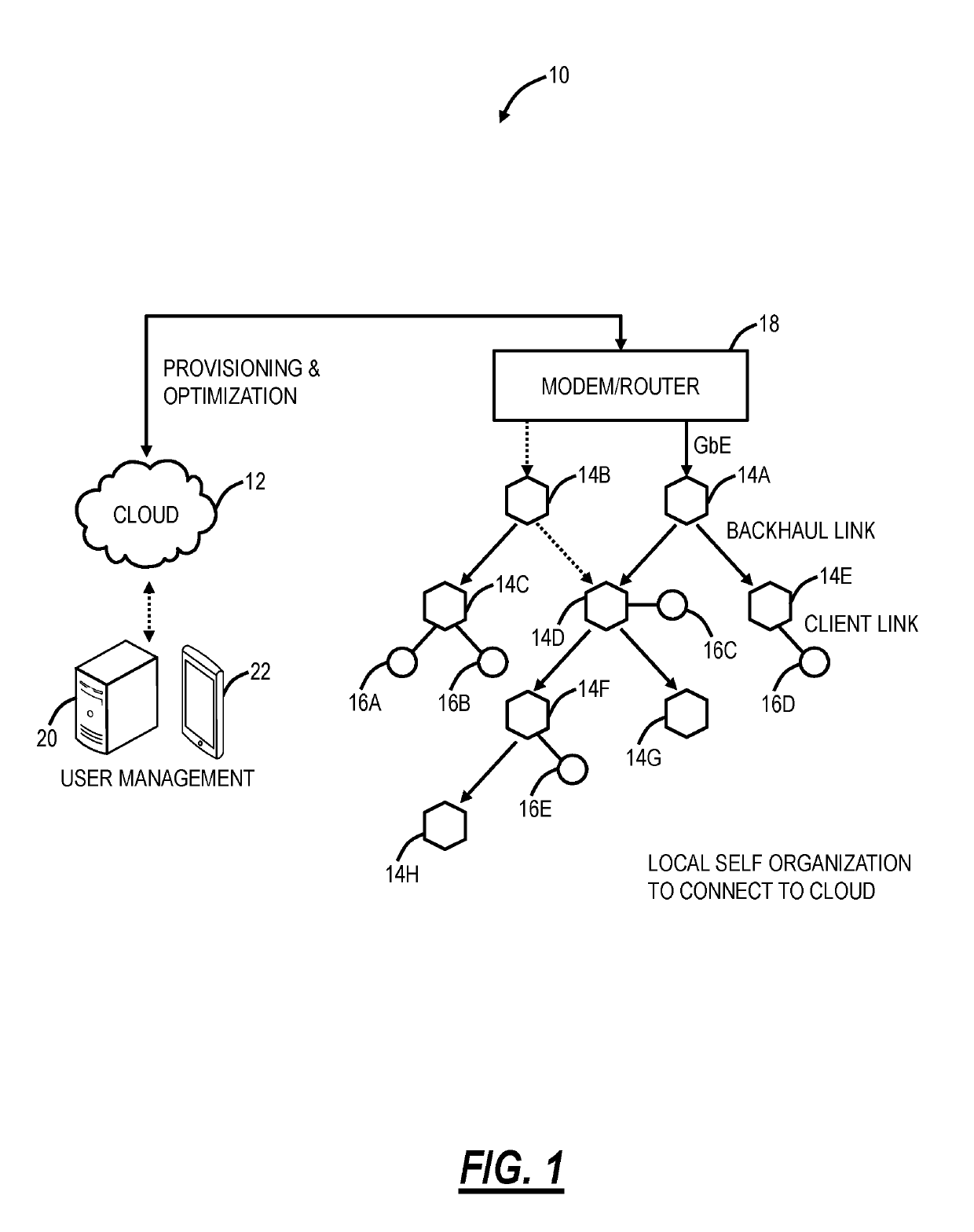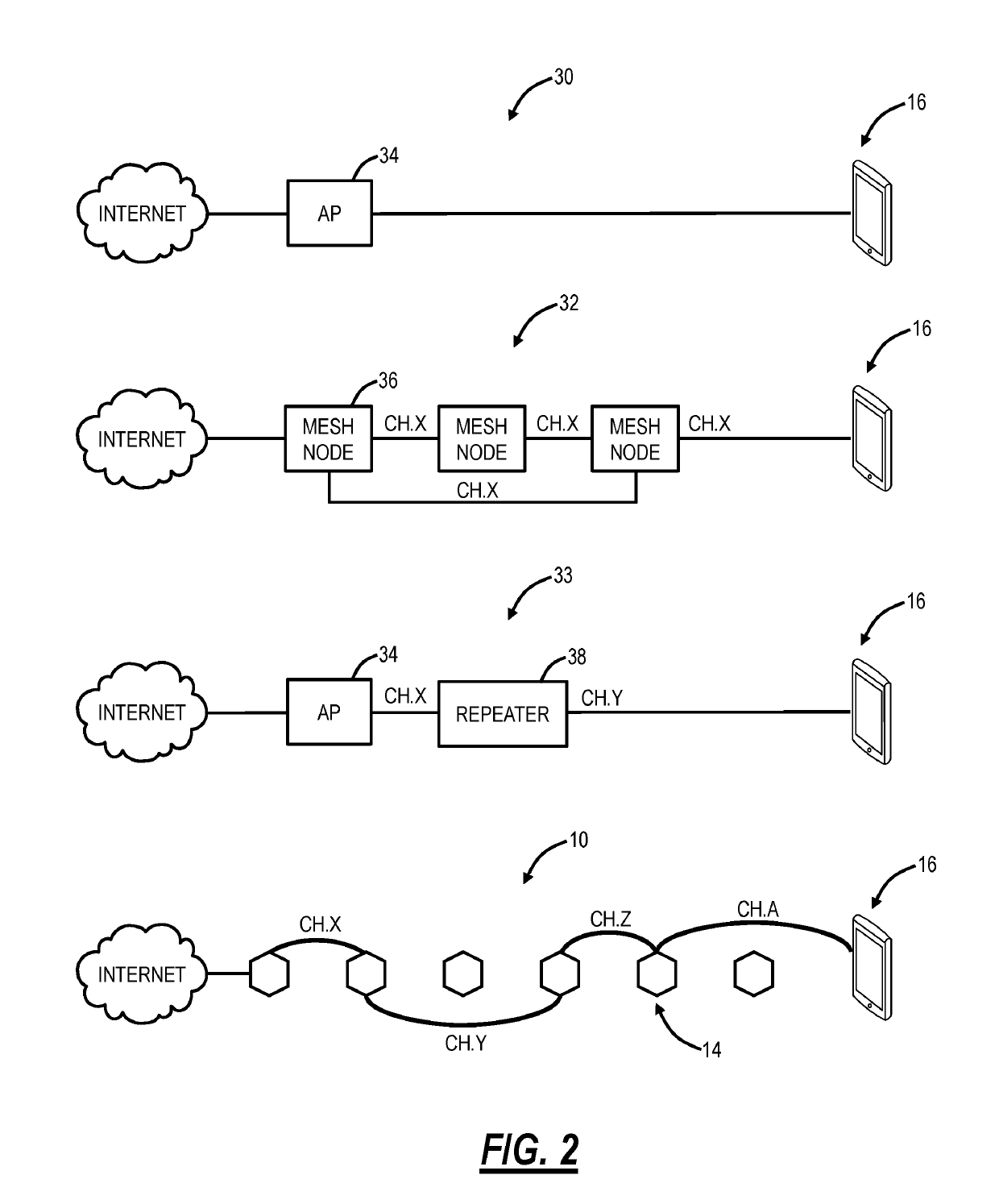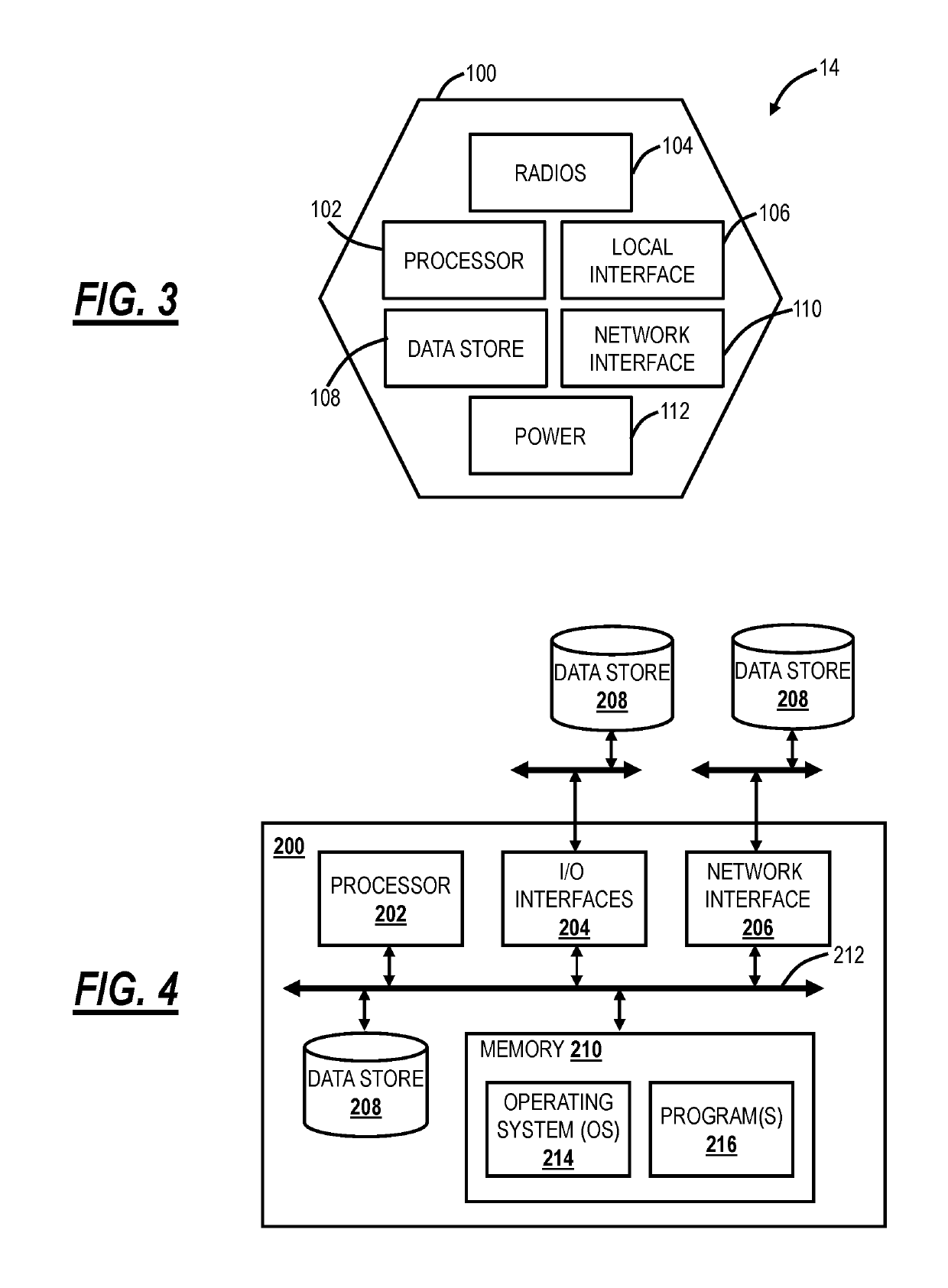Local thermal control of wireless access points
a wireless access point and thermal control technology, applied in the field of wireless networking systems and methods, can solve the problems of increasing the size, complexity, and cost of the product, reducing the maximum possible performance of the wireless router, and reducing the power of the transmitter, so as to reduce the load, reduce the traffic load, and reduce the effect of power
- Summary
- Abstract
- Description
- Claims
- Application Information
AI Technical Summary
Benefits of technology
Problems solved by technology
Method used
Image
Examples
Embodiment Construction
[0031]In various exemplary embodiments, the present disclosure relates to thermal management of wireless access points including local thermal management, cloud-based thermal management, and thermal management based on optimization and operation in a distributed Wi-Fi network. The objective of the present disclosure is for thermal management in access points allowing small form-factors and aesthetic designs, preventing overheating and without requiring reduced performance or reduced hardware. Generally, the systems and methods detect when access points are nearing overheating and alter their operation so as to minimize the reduction of performance in the network while reducing power consumption.
Distributed Wi-Fi System
[0032]FIG. 1 is a network diagram of a distributed Wi-Fi system 10 with cloud-based 12 control. The distributed Wi-Fi system 10 can operate in accordance with the IEEE 802.11 protocols and variations thereof. The distributed Wi-Fi system 10 includes a plurality of acce...
PUM
 Login to View More
Login to View More Abstract
Description
Claims
Application Information
 Login to View More
Login to View More - R&D
- Intellectual Property
- Life Sciences
- Materials
- Tech Scout
- Unparalleled Data Quality
- Higher Quality Content
- 60% Fewer Hallucinations
Browse by: Latest US Patents, China's latest patents, Technical Efficacy Thesaurus, Application Domain, Technology Topic, Popular Technical Reports.
© 2025 PatSnap. All rights reserved.Legal|Privacy policy|Modern Slavery Act Transparency Statement|Sitemap|About US| Contact US: help@patsnap.com



